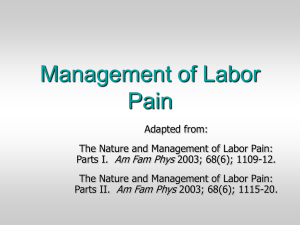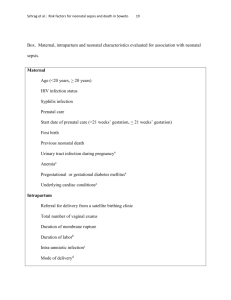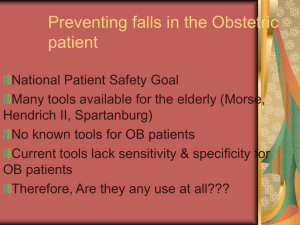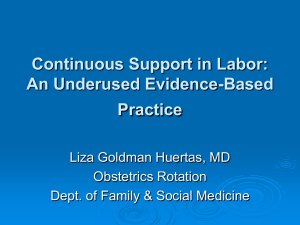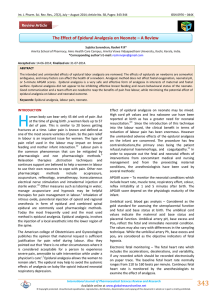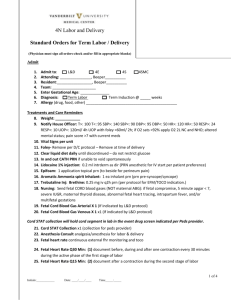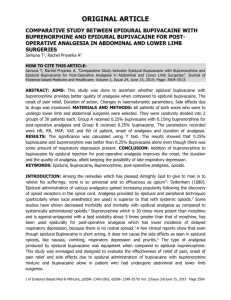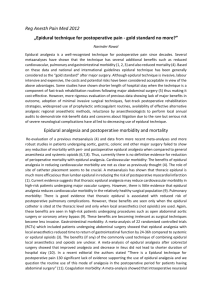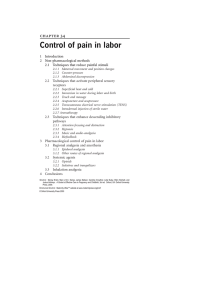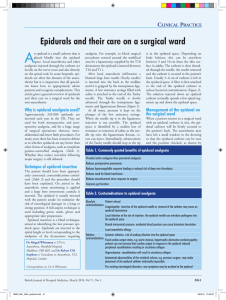Protocol (OB/Gyn)-St. Alexius - School of Medicine & Health Sciences
advertisement
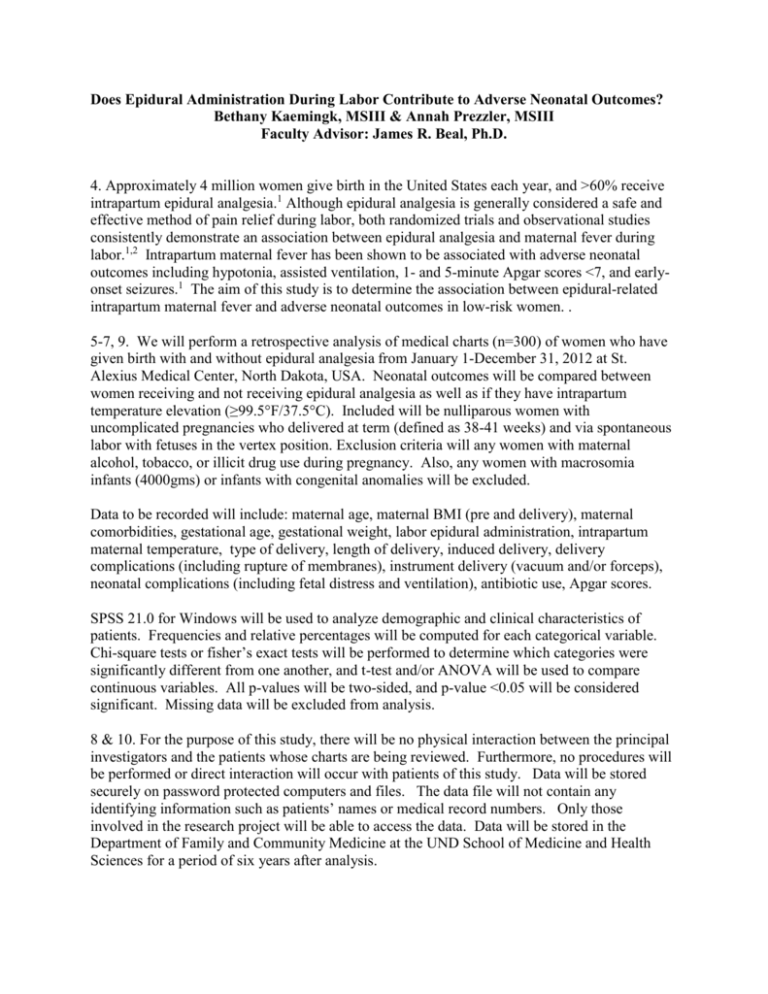
Does Epidural Administration During Labor Contribute to Adverse Neonatal Outcomes? Bethany Kaemingk, MSIII & Annah Prezzler, MSIII Faculty Advisor: James R. Beal, Ph.D. 4. Approximately 4 million women give birth in the United States each year, and >60% receive intrapartum epidural analgesia.1 Although epidural analgesia is generally considered a safe and effective method of pain relief during labor, both randomized trials and observational studies consistently demonstrate an association between epidural analgesia and maternal fever during labor.1,2 Intrapartum maternal fever has been shown to be associated with adverse neonatal outcomes including hypotonia, assisted ventilation, 1- and 5-minute Apgar scores <7, and earlyonset seizures.1 The aim of this study is to determine the association between epidural-related intrapartum maternal fever and adverse neonatal outcomes in low-risk women. . 5-7, 9. We will perform a retrospective analysis of medical charts (n=300) of women who have given birth with and without epidural analgesia from January 1-December 31, 2012 at St. Alexius Medical Center, North Dakota, USA. Neonatal outcomes will be compared between women receiving and not receiving epidural analgesia as well as if they have intrapartum temperature elevation (≥99.5°F/37.5°C). Included will be nulliparous women with uncomplicated pregnancies who delivered at term (defined as 38-41 weeks) and via spontaneous labor with fetuses in the vertex position. Exclusion criteria will any women with maternal alcohol, tobacco, or illicit drug use during pregnancy. Also, any women with macrosomia infants (4000gms) or infants with congenital anomalies will be excluded. Data to be recorded will include: maternal age, maternal BMI (pre and delivery), maternal comorbidities, gestational age, gestational weight, labor epidural administration, intrapartum maternal temperature, type of delivery, length of delivery, induced delivery, delivery complications (including rupture of membranes), instrument delivery (vacuum and/or forceps), neonatal complications (including fetal distress and ventilation), antibiotic use, Apgar scores. SPSS 21.0 for Windows will be used to analyze demographic and clinical characteristics of patients. Frequencies and relative percentages will be computed for each categorical variable. Chi-square tests or fisher’s exact tests will be performed to determine which categories were significantly different from one another, and t-test and/or ANOVA will be used to compare continuous variables. All p-values will be two-sided, and p-value <0.05 will be considered significant. Missing data will be excluded from analysis. 8 & 10. For the purpose of this study, there will be no physical interaction between the principal investigators and the patients whose charts are being reviewed. Furthermore, no procedures will be performed or direct interaction will occur with patients of this study. Data will be stored securely on password protected computers and files. The data file will not contain any identifying information such as patients’ names or medical record numbers. Only those involved in the research project will be able to access the data. Data will be stored in the Department of Family and Community Medicine at the UND School of Medicine and Health Sciences for a period of six years after analysis. REFERENCES 1. Greenwell EA, Wyshak G, Ringer SA, Johnson LC, Rivkin MJ, Lieberman E. Intrapartum Temperature Elevation, Epidural Use, and Adverse Outcome in Term Infants. Pediatrics 2012; 129: e447-e454. 2. Leighton BL, Halpern SH. Epidural Analgesia: Effects on Labor Progress and Maternal and Neonatal Outcome. Seminars in Parinatology 2002; 2: 122-135.
